SID Salutes Display Industry Standouts
SID Salutes Display Industry Standouts
This year’s winners of the Society for Information Display’s Honors and Awards include Hidefumi Yoshida, who will receive the Karl Ferdinand Braun Prize for his contributions to LCD technology; Pochi Yeh, who has earned the Jan Rajchman Prize for his development of matrix methods for analyzing the viewing-angle properties of LCDs; Sang Wan Lee, who will receive the inaugural David Sarnoff Industrial Achievement Prize for his leadership and contributions to the growth of the display industry; Vladimir Chigrinov, who has earned the Slottow-Owaki Prize for his educational efforts in the field of liquid-crystal devices; and Seth Coe-Sullivan, who will receive the Peter Brody Prize for his pioneering contributions to quantum-dot technology.
by Jenny Donelan
IN this, the 50th anniversary of the liquid-crystal display (see our SID News article in this issue about the celebration scheduled for Display Week), it seems appropriate that by chance, every one of this year’s Honors and Awards recipients has enjoyed a career based on or related to LCDs. Hidefumi Yoshida, this year’s Karl Ferdinand Braun Prize winner, based his 40-year career on LCDs. Pochi Yeh, winner of the Jan Rajchman Prize, used his background in optics for thin films to improve the performance of LCDs. Vladimir Chigrinov, Slottow-Owaki Prize winner, became so inspired by the physics of liquid crystals that he abandoned a study of pure mathematics for a research and teaching career dedicated to LCDs. Seth Coe-Sullivan, this year’s Peter Brody Prize winner, is known for his work with quantum dots, but notably chose from among their many possibilities to focus on how they might enhance LCD panels.
Sang Wan Lee, who has won the first-ever David Sarnoff Industrial Achievement Prize, was a different kind of LCD pioneer, a key executive behind the success of the LCD flat-panel TV. Without his persistent championship, the TV landscape might look quite a bit different than it does today. The Sarnoff Prize was created to honor individuals who may not have served the industry through hours in the laboratory, but have contributed through their efforts as visionaries and evangelists. Lee is an ideal example of such a visionary. For an exciting look at how his predictions for LCD-TV sales (viewed as somewhat audacious in 2005, when he made them) came true, see “Anniversary of a Prediction” by Past SID President Paul Drzaic in the March 2010 issue of this magazine. (In the next issue of ID, we will feature an article about the new award and its namesake, another television proponent from earlier days, David Sarnoff.)
Something else this year’s winners have in common besides LCDs is that they saw the potential in a particular display technology and were intrigued enough by it and passionate enough about it to make it their life’s work. We owe our own work and careers to their inspiration and dedication. Please join us in congratulating them for their contributions to the industry and the Society for Information Display as we know it.
|
The 2018 winners will be honored
at the SID Honors & Awards Banquet,
which takes place at 8:00 pm,
Monday evening, May 21, 2018,
during Display Week at the
Intercontinental Hotel in Los Angeles.
Tickets cost $100 and must be purchased
in advance – they will
not be available on site.
Visit www.displayweek.org
for more information.
|
2018 Karl Ferdinand Braun Prize
This award is presented for an outstanding technical achievement in, or contribution to, display technology.
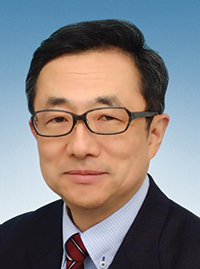
Hidefumi Yoshida, SID Fellow and research director at Sharp Corp., will receive the Karl Ferdinand Braun Prize “for his contributions to LCD technology, especially wide-view multi-domain vertical-alignment LCD, the photo-alignment process, half-tone technology, and fast-response and flexible LCD architectures.”
Dr. Yoshida has focused on LCD technology for his entire career – a period spanning more than 30 years. But when starting out in the mid-1980s, he nearly followed a completely different career path. Yoshida was preparing to start work at Fujitsu Ltd. (his first job after graduating with an M.S. from Tokyo University) as a dynamic random access (DRAM) engineer, when a director and supervisor at the company changed Yoshida’s department and area of concentration to LCD.
DRAM’s loss was LCD’s gain, because Yoshida went on to make many significant contributions to the field, including developing new display modes for vertically aligned LCDs; dividing domains by optical alignment; improving viewing angles by developing new optical or pixel configurations; creating a fast response mode with oblique field applications; and much more. He also developed both a transparent LCD and a flexible one.
“Dr. Yoshida has made significant contributions to the LCD technology process, especially through his pioneering work on multidomain vertical alignment technology when he was at Fujitsu,” says Jun Souk, a professor at Hanyang University. “He is regarded very highly as a pioneer in making VA a commercially successful technology.”
In fact, one of the achievements Yoshida says he is most pleased with concerns vertically aligned (VA)-LCD photo-alignment. “When I started out,” says Yoshida, “there was no equipment at our company for producing a suitable beam of UV light for substrate irradiation.” He had heard that polarized UV light could be effective for creating an alignment layer, but few options existed for polarizing materials. “I concluded that for mass-production, I would need to develop a solution using non-polarized light,” he says. A UV light manufacturer agreed to let him borrow its equipment, and he ended up performing experiments at its factory every week for almost half a year (each round trip to the factory took three hours). “I was able to realize the uniform alignment by irradiating with un-polarized UV, improving the alignment layer. In this case, the anisotropic irradiation was the key. If the surface of a substrate is irradiated by UV light coming from an oblique direction, the irradiation is anisotropic and the slant alignment necessary for VA is realized.” In this way he was able to prove that polarized UV light was not necessary in principle. “Nowadays,” he says, “better alignment is realized by using polarizers, but at the time it was not a viable approach in mass production.”
Yoshida earned a Ph.D. from the Tokyo Institute of Technology in 1997 and served as a visiting scientist at Kent State University from 1994 to 1996. He joined Sharp in 2008, where he now works as a research director. The greatest challenge the LCD industry now faces, he says, is the onslaught of OLED and quantum dot technology. “In the past,” says Yoshida, “there were some rivals to LCDs, but they disappeared due to their own problems or issues.” Now, he notes, whatever display technologies eventually prevail, issues of reliability, manufacturability, and cost performance remain the key factors.
2018 Jan Rajchman Prize
This award is presented for an outstanding scientific or technical achievement in, or contribution to, research on flat-panel displays.
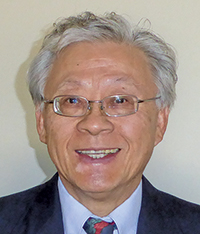
Pochi Yeh, a technology consultant, will receive the Jan Rajchman Prize “for his contributions to the development of matrix methods for analyzing the viewing-angle properties of LCDs, and to the development of phase compensators.”
Dr. Yeh, a prolific author and inventor, is perhaps best known as one of the developers of the Extended Jones Matrix Method, used in simulating the design and analysis of optical transmission in LCDs. In addition, notes Andy Ying-Guey Fuh, professor emeritus at National Cheng Kung University, “Dr. Yeh and his co-workers were among the first to propose and demonstrate thin-film compensators to improve the viewing-angle characteristics of liquid-crystal displays, including contrast ratios and color stability.”
Yeh, who graduated from the California Institute of Technology with a Ph.D. in physics, was originally trained as a physicist, and started his career working in optics for thin films. In the early 1990s, he was the principal technical advisor at Rockwell Science Center, which was sponsoring a project aimed at improving the viewing quality of LCDs for avionics displays.
“In the early days of LCDs,” explains Yeh, “the contrast and colors degraded significantly at large viewing angles. And at that time, Rockwell made all the cockpit displays for Boeing aircrafts.” Consistent color and contrast over wide viewing angles were necessary to ensure that the pilot and co-pilot saw exactly the same information on the cockpit display. So there was a need to improve the contrast and color of Rockwell’s LCDs. “My background in thin films,” says Yeh, “was useful for the development of compensators that greatly improved the viewing quality of LCDs for cockpits.” That work gained momentum and distribution, as those same high-quality LCDs eventually went into households as flat-screen televisions. That work on compensators, says Yeh, led to work in further aspects of LCD optics that eventually became his career. In addition to working at Rockwell, Yeh was a professor at the University of California at Santa Barbara for nearly 30 years.
Yeh notes that technical problems that still need to be solved in LCDs include higher frame rates and 3D imagery. “The most difficult problem is the display of real 3D images and videos using holographic technology in a flat LCD panel,” says Yeh.
2018 David Sarnoff Industrial Achievement Prize
The David Sarnoff Industrial Achievement Prize is designed to honor outstanding recipients who would not qualify for one of SID’s technical achievement awards but who nonetheless have had a profound, positive effect on the display industry over a period of many years, and are broadly recognized across the industry.
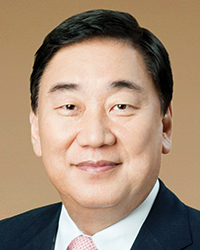
Sang Wan Lee, professor at Hanyang University and former CEO of Samsung’s LCD Division, has earned the inaugural David Sarnoff Industrial Achievement Prize “for his leadership and contributions to the growth of the display industry, and especially to large-screen LCD TVs.”
Dr. Lee is known for his pioneering efforts on behalf of the flat-panel display industry, and for his significant impact on the LCD industry in particular. Lee assumed leadership of the LCD division at Samsung Electronics in 1993. During his 15 years as CEO at Samsung, he led the company to grow the notebook and LCD monitor market through aggressive investment and panel-size standardization. He was the first to invest in Gen 7 fabs that made volume production of LCD-TV panels economically feasible, and which in turn made possible the era of very large-screen LCD TVs in the early 2000s.
“Professor Lee stimulated and led the LCD industry by setting a high level of targets to be achieved,” says Jin Jang, director of the Advanced Display Research Center and Department of Information Display at Kyung Hee University. “For example,” says Jang, “he was invited to give a keynote speech at Display Week 2005 in Boston, at which time he forecast sales of LCD TVs to increase to 100 million units per year by 2010. He called on the entire display industry to work together to achieve this goal.” Although this seemed like a radical prediction at the time, it came true two years early, in 2008.
Lee explains that he grew interested in TVs in the early 2000s when he saw how quickly LCDs (already the dominant display in laptops) were replacing CRTs in desktop monitors. LCD monitor sales doubled every year from 1998 to 2001, he notes, going from 1.5 million units in 1998 to 15 million in 2001. “But,” Lee explains, “the LCD-TV market was a different and very difficult one for many reasons.” First, there was no suitable LCD technology for large-screen TVs at that time, including wide viewing-angle technology, a high-speed liquid-crystal driving method for moving imagery, and high gamut color. There wasn’t any process equipment to make such TVs, and creating that equipment would require a huge and risky fab investment.
Undeterred and inspired, Lee drove forward. “I decided to challenge the LCD-TV panel business,” he says, “and to be ahead of the other manufacturers (the early bird gets the worm strategy).” With the world’s first 40-in. LCD-TV prototype announced in 2001, and the first Gen 7 fab operational in 2005, Samsung LCD was indeed able to reap the benefits of “early-bird mode,” as Lee puts it. It’s important to note here that while Lee wanted his company to be first to the market, he didn’t wish for it to be exclusive there. “I always believed the LCD industry should grow together,” he says, “and we could make the market big through the whole industry working together.”
When asked what advice he would give to other CEOs in this area, Lee observes that the current situation is challenging, with the worldwide TV market near-saturated and LCD penetration close to 100 percent. He adds that there are very many players now and that “China’s bold investment in Gen 10 fabs can change the market.” Today’s CEOs are facing difficult challenges, with fast-changing, more-diversified display dynamics, including OLED TVs, QLEDs, microLEDs, and more. But success can still be had if CEOs practice forward thinking by investing in innovative materials, says Lee.
2018 Slottow-Owaki Prize
The Slottow-Owaki Prize is awarded for outstanding contributions to the education and training of students and professionals in the field of information displays.

Vladimir Chigrinov, professor at Hong Kong University of Science and Technology, will receive the Slottow-Owaki Prize “for his educational efforts in the field of liquid-crystal devices, as evidenced by his teaching, supervision of graduate students, and prolific publications and conference presentations.”
Dr. Chigrinov got his start in the display industry after receiving his M.S. degree in applied mathematics from the Moscow Technical University of Electronics and Mathematics in 1973. But as he headed toward doctoral work, he became more and more interested in the physics of liquid crystals than in pure mathematics. “I worked in projects aimed at understanding the fundamental aspects of LCD technology,” says Chigrinov, “including the special measurement techniques of LC physical parameters such as viscosity, elasticity, optical and dielectric constants, etc.” He subsequently earned a Ph.D. in solid-state physics from the Shubnikov Institute of Crystallography at the USSR Academy of Sciences, with a thesis titled “Investigation of Instabilities in Nematic Liquid Crystals.”
Throughout his career, Chigrinov has participated in making prototypes of the first liquid-crystal displays based on dynamic scattering with electrically controlled birefringence. He also focused on computer modeling of these LC properties. Under his supervision, a unique software module was created that enabled the simulation and optimization of real LC behavior without entailing any physical experiments. In addition to this research, Chigrinov has written six books and more than 280 journal papers, and taught in various capacities at the Hong Kong University of Science and Technology since 1999.
Says physicist and inventor Martin Schadt, “Professor Chigrinov is a dedicated applied scientist with a profound understanding of liquid crystal science and technology. His well-written textbooks and original publications on LCDs are inspiring and of great value for teachers and students.”
Looking back at his career, Chigrinov says he is particularly proud of pioneering LC photoaligning technology, including highly sensitive optically rewritable (ORW) photo-aligning materials and superfast ferroelectric LC (FLC) materials.
Students’ comments over the years on Chigrinov’s lectures attest to his success as an educator. Such comments include: “deep understanding of the subject area and good attitude toward students,” “very up to date with recent developments,” “enthusiastic about the material, and very knowledgeable on the subject,” and “very kind-hearted person” who is “easy to approach.” Chigrinov’s greatest satisfaction as an educator are the professional relationships he has with former students who have embarked on their post-graduate careers at universities and companies. “I still look forward to new research projects with my former students and continue to work with them on interesting future LC applications in displays and photonics,” he says.
2018 Peter Brody Prize
The Peter Brody Prize is awarded to honor outstanding contributions of young researchers (under age 40) who have made major-impact technical contributions to the developments of active-matrix addressed displays in one or more of the following areas:
• Thin-film transistor devices
• Active-matrix addressing techniques
• Active-matrix device manufacturing
• Active-matrix display media
• Active-matrix display enabling components

Seth Coe-Sullivan, vice president of technology and chief technology officer for Luminit, will receive the Peter Brody Prize “for his pioneering contributions to quantum-dot based technologies in displays and to their impact on active-matrix display technologies.”
Quantum dots (QDs) are new but now well known in the display industry, both as a material in current use as an LCD backlight color gamut enhancer, and as a material with potential to disrupt the industry with new types of self-emitting devices, including displays. Dr. Coe-Sullivan, an expert in QD materials and devices for solid-state lighting and displays, has been a major force behind the development of QDs, making exceptionally efficient use of his short 20-year-old career. His doctoral thesis at the Massachusetts Institute at Technology, where he received his Ph.D. in 2005, led to the formation of QD Vision, a company that paved the way for quantum-dot technology for displays.
According to Larry Weber, founder of Plasmaco, “Seth’s major contribution to active-matrix displays has been to develop practical ways to introduce quantum dots into manufacturable products. An example of this is his work with Sony to put the QD Vision quantum dots into the Sony 65-in. Bravia active-matrix LCD first shown at the January 2013 Consumer Electronics Show in Las Vegas. This product won the Best in Show and Best Home Theater Product at CES. Today the display industry widely accepts the concept that quantum dots are needed to make superior active-matrix LCD products.”
Coe-Sullivan first learned about QDs when he was interviewing with professors at MIT, deciding which group he would join. Professor Vladimir Bulovic at MIT showed him some images he had received from Professor Moungi Bawendi, says Coe-Sullivan, and expressed his desire to make a good LED out of these materials. “Bulovic’s passion was contagious,” says Coe-Sullivan, “and I spent the next 17 years of my life (and counting) in the field.”
When asked what achievement he is proudest of with regard to his quantum dot work, Coe-Sullivan replies, “I’m proud that we (not me alone) were able to reduce QDs to something relatively simple that adds value to the devices that you use every day. There were and are lots of incarnations that were more elegant, sexier, and flashier than using QDs as a down-conversion replacement for phosphors in LCD TVs backlights, but we stayed focused on the simple and useful, and created an industry around that innovation. Now the QD industry (there is one!) can work on those harder but cooler solutions, and bring a whole new generation of QD products to market in displays, and elsewhere.” •
2018 SID Fellow Awards
The grade of Fellow is conferred annually upon SID members of outstanding qualifications and experience as scientists or engineers whose significant contributions to the field of information display have been widely recognized.

Steven Bathiche for his contributions to one of the first computer-vision mixed-reality computers for multi-touch and object recognition, and to the seed technologies for Microsoft Surface computers.”
Mr. Bathiche is a research director with the Applied Sciences Group at Microsoft. He has a master of science degree in bioengineering from the University of Washington.
**********************************

Mary Lou Jepsen for her contributions to display technology and product development, especially low-cost laptop and netbook displays, low-power sunlight-readable LCDs, virtual reality, and wearable displays.”
Dr. Jepsen is the founder of Openwater. She has a Ph.D. in optical physics from Brown University.
**********************************

Ioannis Kymissis “for his sustained contributions in the application of thin-film electronics to display technologies.”
Dr. Kymissis is an associate professor in the electrical engineering department at Columbia University. He has a Ph.D. in electrical engineering and computer science from the Massachusetts Institute of Technology.
**********************************
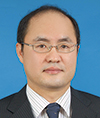
Seok-Lyul Lee “for his invention, product development, and commercialization of fringe-field switching liquid-crystal display devices.”
Mr. Lee is senior manager/chief researcher at AU Optronics. He earned his M.S. in polymer/nanoscience technology at Chonbuk National University.
**********************************
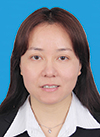
Qiong-Hua Wang “for her contributions to the science and technology of 3D display systems based on integral imaging and lenticular lenses.
Dr. Wang is a professor at Beihang University. She earned a Ph.D. in optical engineering at the University of Electronic Science & Technology of China.
2018 SID Special Recognition Awards
Presented to members of the technical, scientific, and business community (not necessarily SID members) for distinguished and valued contributions to the information-display field.

Jae-Hoon Kim “for his contribution to the development of LCDs and other optical and organic devices.”
Dr. Kim is a professor at Hanyang University. He earned his Ph.D. in physics at Sogang University.
**********************************

Hisahiro Sasabe “for his contributions to the science and technology of multifunctional materials realizing low-power-consumption OLEDs, and for outstanding contributions to the literature.
Dr. Sasabe is an associate professor at Yamagata University. He received his Ph.D. in applied chemistry from Osaka Prefecture University.
**********************************
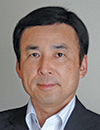

Yasushi Tomioka and Noboru Kunimatsu “for their leading contributions to the research and development of photodecomposition-type photoalignment into mass production of planar-aligned in-plane switching and fringe-field switching LCDs.”
Dr. Tomioka and Dr. Kunimatsu are engineers at Japan Display, Inc. Dr. Tomioka received a Ph.D. in chemistry from Tohoku University. Dr. Kunimatsu received his Ph.D. in chemistry from the University of Southampton.
**********************************
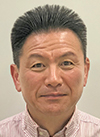
Katsuhide Uchino “for his leading contributions to the research and development of designs for high-resolution AMOLED displays and micro-OLED displays.”
Mr. Uchino is a device engineer and manager at Sony Corp. He earned an M.S. in applied physics from Waseda University.
Jenny Donelan is the editor in chief of Information Display Magazine. She can be reached at jdonelan@pcm411.com.